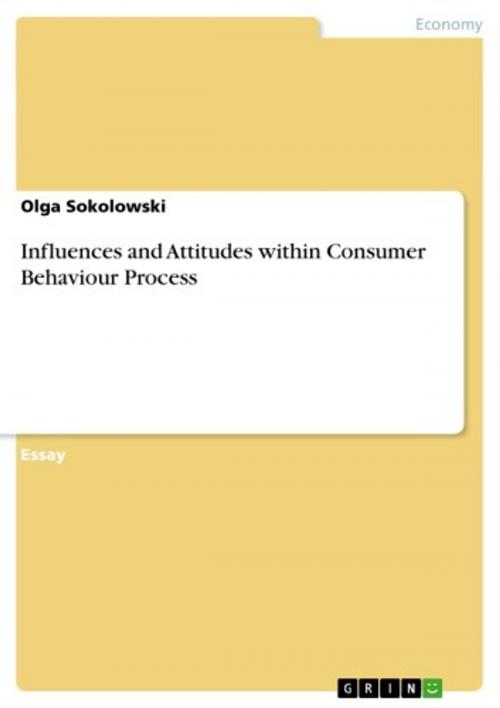| Author: | Olga Sokolowski | ISBN: | 9783640979080 |
| Publisher: | GRIN Publishing | Publication: | August 8, 2011 |
| Imprint: | GRIN Publishing | Language: | English |
| Author: | Olga Sokolowski |
| ISBN: | 9783640979080 |
| Publisher: | GRIN Publishing |
| Publication: | August 8, 2011 |
| Imprint: | GRIN Publishing |
| Language: | English |
Essay from the year 2011 in the subject Business economics - Marketing, Corporate Communication, CRM, Market Research, Social Media, grade: 1,0, University of Gdansk, course: Consumer Behaviour, language: English, abstract: Currently, the behaviour of consumers is changing more frequently than it was decades ago. What used to be 'in' yesterday is 'out' today. Identifying and understanding the subcon-scious triggers that are accountable for particular customer actions and reactions is a key fac-tor for enterprises when establishing efficient solutions. Being unaware to customer behaviour is not feasible. There are various influences on human behaviour. The decision-making proc-ess is affected by cultural and social factors, for example through the individual's family and friends. The childhood and the human's development has a crucial impact on personal deci-sion making process. Furthermore, it is affected by individual characteristics, e.g. age and lifestyle, as well as psychological factors, e.g. motivation, beliefs and attitudes. Examining complex relations of a variety of aspects, present at diverse stages, from arousal to decision, as well as from purchase to post-purchase experiences is vital in order to understand purchasing behaviour. For that reason, this essay intends to give a general overview on consumer behaviour and to point out the development and changes of consumer attitude over time. Concerning this matter, the consumer behaviour process with its general main stages will be discussed at first. As major power of influence within the purchasing process the environmental and personal fac-tors as well as the marketing mix will be highlighted especially. For clarifying the importance of further discussed theoretical models as well as illustrating its ubiquity an practical example of a day-to-day purchasing decision will be discussed. As a rounding up for the reader a conclusion will follow.
Essay from the year 2011 in the subject Business economics - Marketing, Corporate Communication, CRM, Market Research, Social Media, grade: 1,0, University of Gdansk, course: Consumer Behaviour, language: English, abstract: Currently, the behaviour of consumers is changing more frequently than it was decades ago. What used to be 'in' yesterday is 'out' today. Identifying and understanding the subcon-scious triggers that are accountable for particular customer actions and reactions is a key fac-tor for enterprises when establishing efficient solutions. Being unaware to customer behaviour is not feasible. There are various influences on human behaviour. The decision-making proc-ess is affected by cultural and social factors, for example through the individual's family and friends. The childhood and the human's development has a crucial impact on personal deci-sion making process. Furthermore, it is affected by individual characteristics, e.g. age and lifestyle, as well as psychological factors, e.g. motivation, beliefs and attitudes. Examining complex relations of a variety of aspects, present at diverse stages, from arousal to decision, as well as from purchase to post-purchase experiences is vital in order to understand purchasing behaviour. For that reason, this essay intends to give a general overview on consumer behaviour and to point out the development and changes of consumer attitude over time. Concerning this matter, the consumer behaviour process with its general main stages will be discussed at first. As major power of influence within the purchasing process the environmental and personal fac-tors as well as the marketing mix will be highlighted especially. For clarifying the importance of further discussed theoretical models as well as illustrating its ubiquity an practical example of a day-to-day purchasing decision will be discussed. As a rounding up for the reader a conclusion will follow.















